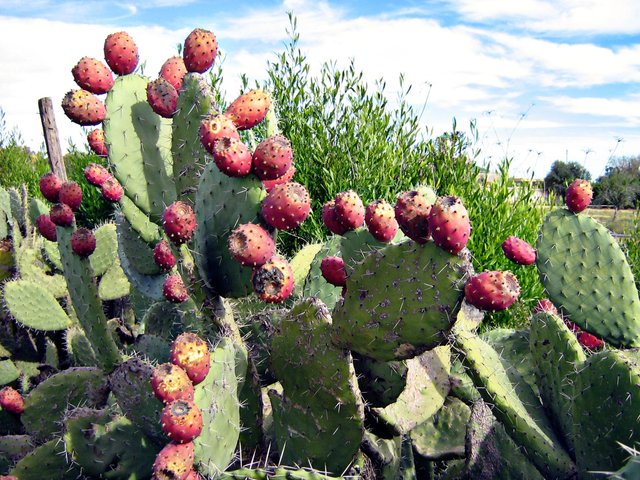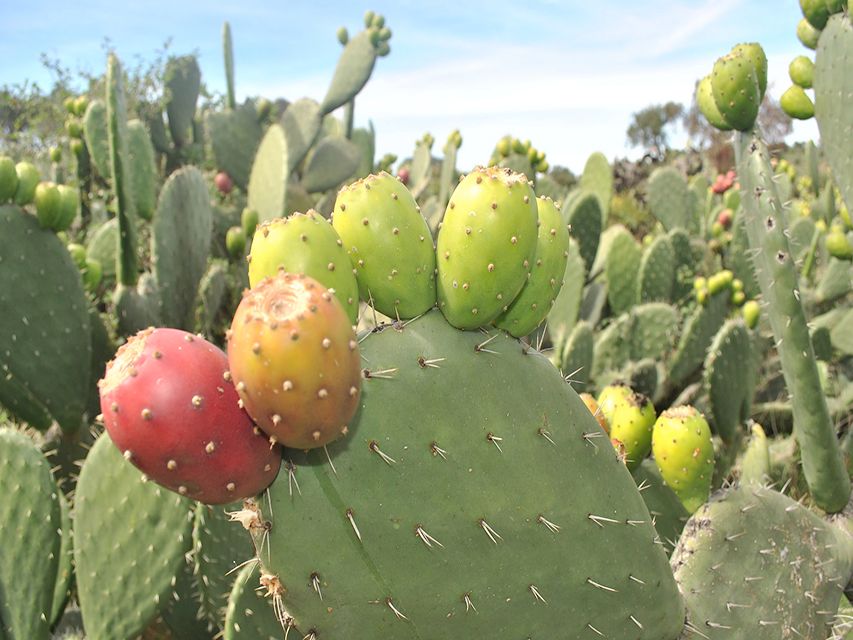busy How to Eat Prickly Pear Cactus?
Prickly pear cactus has been a staple of the Mexican and Central American diet for thousands of years. In parts of the U.S. it has been gaining popularity as an exotic, gourmet and healthy addition to one's diet. The prickly pear plant has three different edible sections: the pad of the cactus (nopal), which can be treated like a vegetable, the petals of the flowers, which can be added to salads, and the pear (tuna), which can be treated like a fruit. They grow wild throughout the American southwest, down to South America and up to Canada. The ones you may find at a local store or farmers market will surely originate from a commercial nopal farm.
Buy or forage some prickly pear pads. See Warnings. There's a reason it's called the prickly pear cactus.
Find pads that are bright green and firm.
Small, young pads harvested in early spring are thought to be the most succulent, delicate in flavor, and have the fewest spines. The thicker a pad, the older it is. Older pads tend to be stringy and their sap will be thicker, which some people find unpleasant. Leave those for other species who use them as survival food during lean foraging seasons. The tender pads are sometimes sold as "baby nopales".
If you're harvesting them yourself, wear extremely heavy gloves or use tongs. Snap the pads off the plant or cut at the stem. Cutting at the stem reduces stress on the pad, and allows the cactus to recover more quickly than snapping or tearing the pad away. This helps keep your cactus plant healthy for future harvests.
Remove the spines from the pad by using a vegetable peeler or a paring knife. Don't take off the gloves until the pads are completely rinsed and the peeled remnants are cleared. The pads not only have large spines, but there are also tiny, invisible and far more irritating spines called glochids that are extremely difficult to remove from the skin. The spines and glochids can also be removed from the prickly pear pads by burning them off with a small torch or by placing the pad on a gas burner and turning it with tongs. See Warnings.Run the pad under cool water. Peel or cut off any discolorations or bruises. Slice or cut the pads (wipe the knife blade after each slice, as there can be small spines sticking to it), or leave them whole, depending on what you will be using the nopales for.
Cook the nopales. They can be either boiled or grilled, as well as mixed with other ingredients to make unique, satisfying and healthy dishes.
If you boil the nopales, you may sometimes have to drain and re-boil them once or twice, depending on how thick the sap is. The thicker the pad, the thicker the sap.
Boiling them with a copper coin (an old Mexican "veinte") is a common remedy to thin the sap and make it more palatable to unaccustomed diners.
The boiled nopales are then drained, washed off with cold water and served as a salad with finely diced tomatoes, onion, cilantro and jalapeños and seasoned with vinegar, salt and lime juice.
If you grill the nopales, you might want to coat generously with pepper, salt, and other spices. They're ready when they're tender and slightly browned.
Grilled nopalitos strips can be seasoned with fresh lime juice and a little olive oil. You can also add grilled portobello mushrooms to the mix.
Try stirring the cooked nopales into soup, mixing them into a salad or omelet, pickling them, or eating them alone.
A popular and traditional Mexican dish is "nopalitos en salsa verde", where the nopales are cut in strips and boiled in water (see above), and then re-cooked in the traditional sauce made of tomatillos (which are sometimes mistaken for green tomatoes, but are actually a completely different fruit that grow in a papery husk), onion, garlic, cilantro and jalapeño chiles (puree the sauce ingredients in a blender and then bring to a boil and simmer). This is usually eaten in a soft tortilla as a taco or with chips.


wow plz. foll. & vote